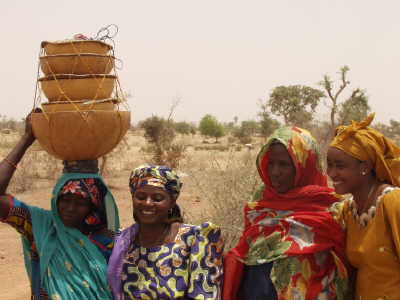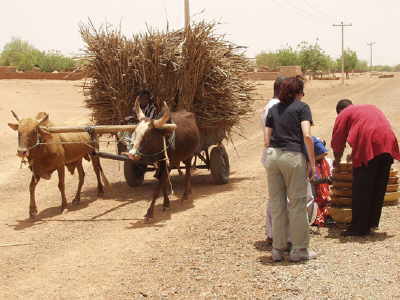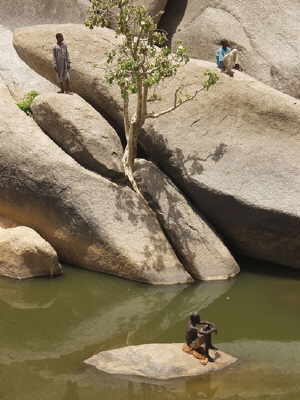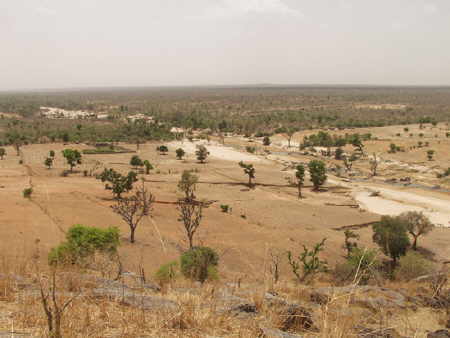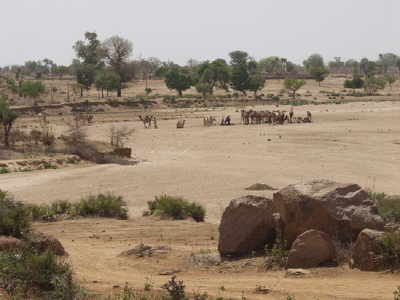Trip to: The Holy North: Yartsamiya, Katsina and Daura
Date: April 30th – May 3rd, 2004
Trip leader: Robert Warren
Trip report: Günther Kleinöder
“It looks like they carry all the wood out of their indigeneous forest at Yartsamiya” says Robert disappointed and we all look at each other with long faces. With a locally rented, fairly used Mercedes and Andreas’dominating Toyota jeep we rumble over dusty dirt roads – Robert, Annette, Andreas, JoAnna, Uschi, Nicolas and myself. No rain this year yet, the yellowed earth is cracked, hard. Huge, still sleeping Baobab trees stretch their knobby knots to the flirring, deep blue sky.
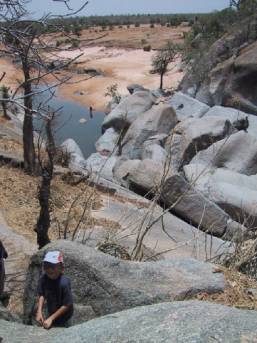
Nearly 100 children follow our trek, most of them had not seen white skin in their whole life. Nicolas with his 7 years and blond hair is obviously the attraction. An older boy even carries him over the steeply sloped, round bolders down the valley. “They are my friends now.” laughs Nicolas and his father, short breathed, dreams about being carried away. JoAnna and Uschi get carried away – riding Okadas back to the cars.
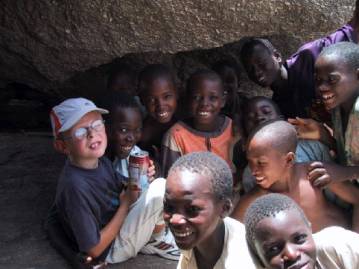
The hotels were the best ones you can find here: The beautiful, professionally managed Prince Hotel in Kano with its excellent Calypso restaurant and the government run, adventurous chalets of the Liyafa Palace Hotel in Katsina with its well fed rat climbing down the wall near our breakfast table.
Evening hours at the Niger border: The buzzling, colourful Jibiya market with many different tribes gathering to trade foodstuff of all kinds, trudging cattle, nervous sheep, pushing donkeys.
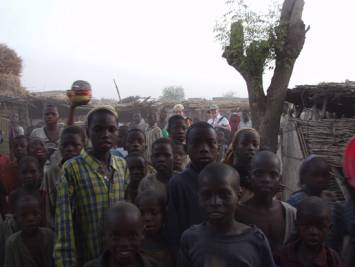
Andreas with his large size is the attraction this time. Again, plenty of torn kids, dirty and pitiful, follow our trek through the crowds.
Katsina is good for its sightseeing, although everything seems to be decaying slowly: The Old Katsina College – founded 1922 to teach Islamic tradition during Colonialism, the crumbling Gobarau Minaret – a watchtower and historical landmark built in Timbuktu architecture in the 15th century, and the Emir’s Palace – with a bit of a modern touch on the original clay and wood constructions.
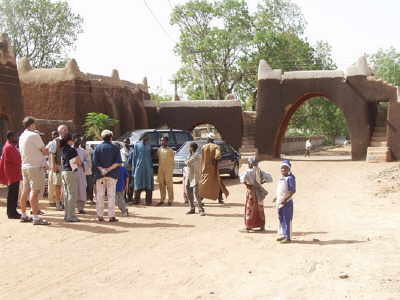
Restoration of the run-down citywalls of Kano is being subsidized by the German government. Some mud bricks are baking in the sun, propably intended for the wall, most likely ending up restoring private residences.
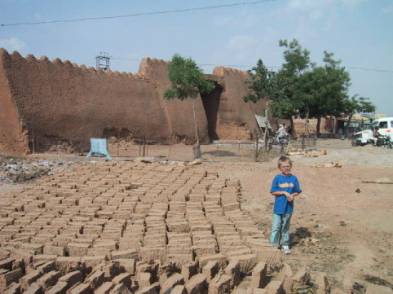
Kano Market: young, bare-bodied men shovel awful smelling mud out of the ditches onto the road until the next rain is going to wash it in again; laughing children wade between floating plastic bags in black oily water.
Robert trades for a few ancient Maria Theresa silver coins, Nicolas is proud about his newly acquired bow and arrows, Uschi is into leatherware, JoAnna tries to avoid the smell of flies surrounded meat and towering cow`s legs. And busy traders pursue Gunther to the cars and finally hand over the necklace for a third of the original price: “You are my first customer!”
In Daura things are different. We queue up waiting for an audience with the Emir, resting in golden, little torn Renaissance chairs in the wide open area of the reception hall. The Emir is at home in his colourful, well-preserved Hausa palace, waiting for the Vice President to give his condolence: The Emir’s only son was recently killed in an accident.
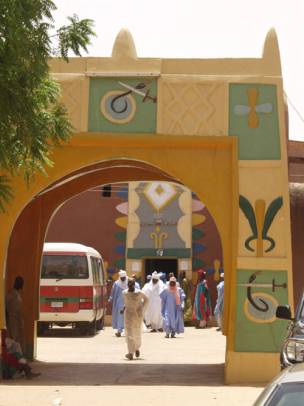
We move on, and go to drink the holy water of the nearby 900 years old Kusugu well, where Prince Bayajidda had beheaded the evil snake Sarki. Bayajidda was smart enough to refuse half of the town as a present and rather married Queen Daurama thus getting the whole city. The water is nice and refreshing and is believed to cure many ailments – next day I have a running stomach.
A week later dozens of Christians are killed in Kano during raging religious street riots as a retaliation for the slaughtering of several hundred Muslims in Plateau State`s city of Yelwa.
I am shivering.
Günther Kleinöder (Germany)
